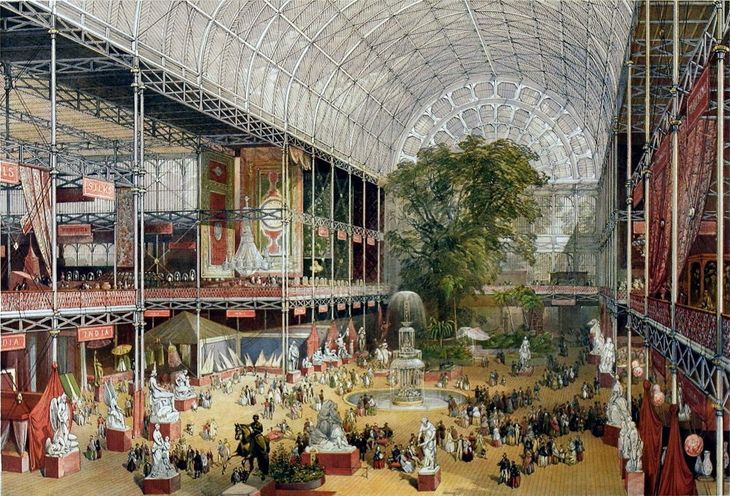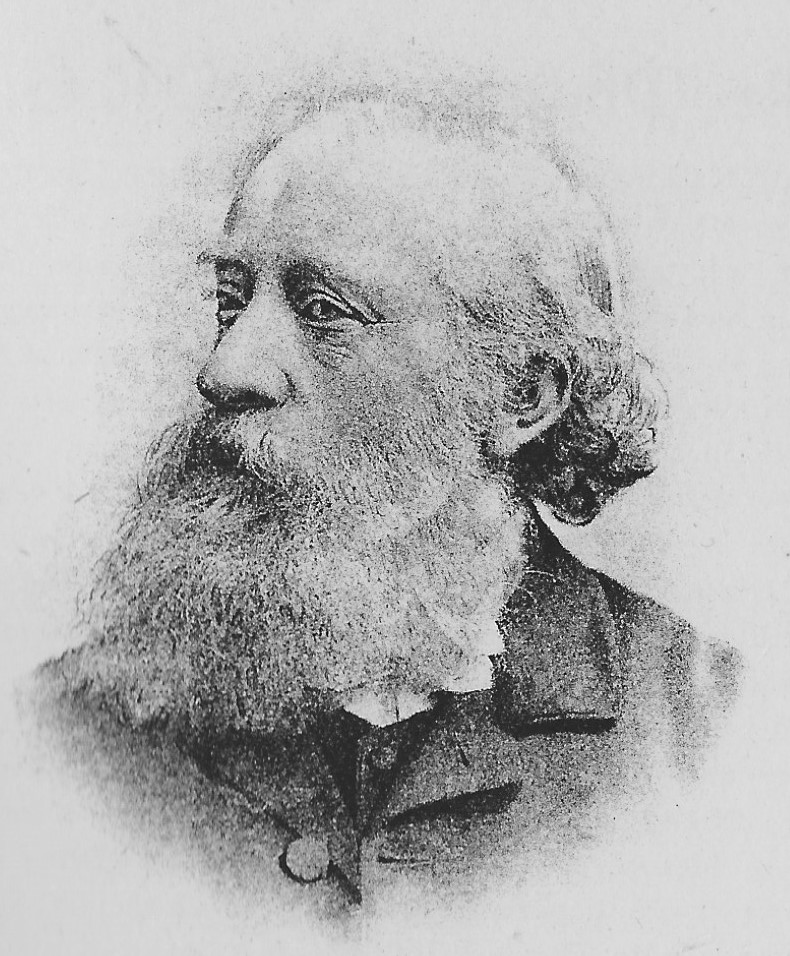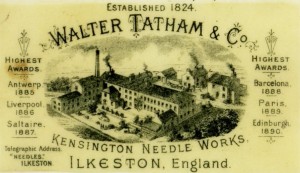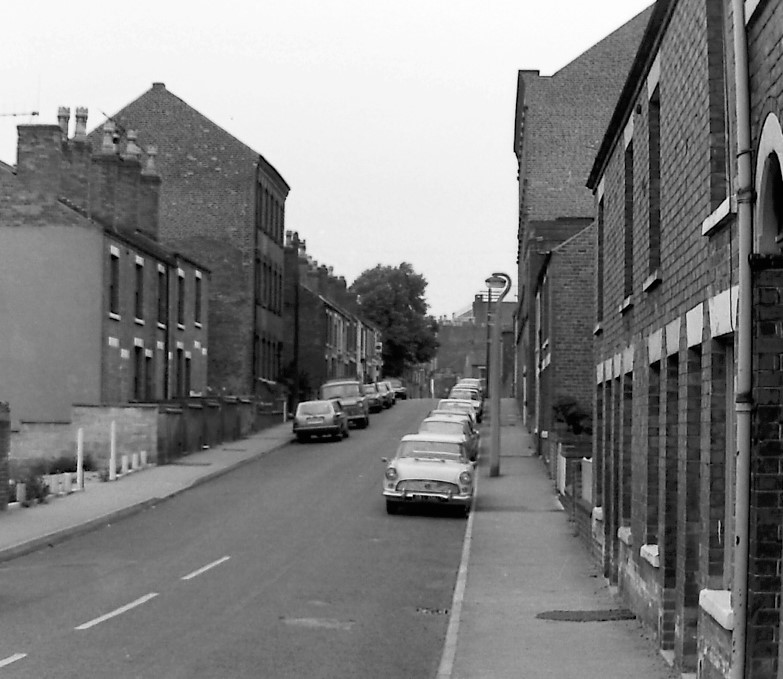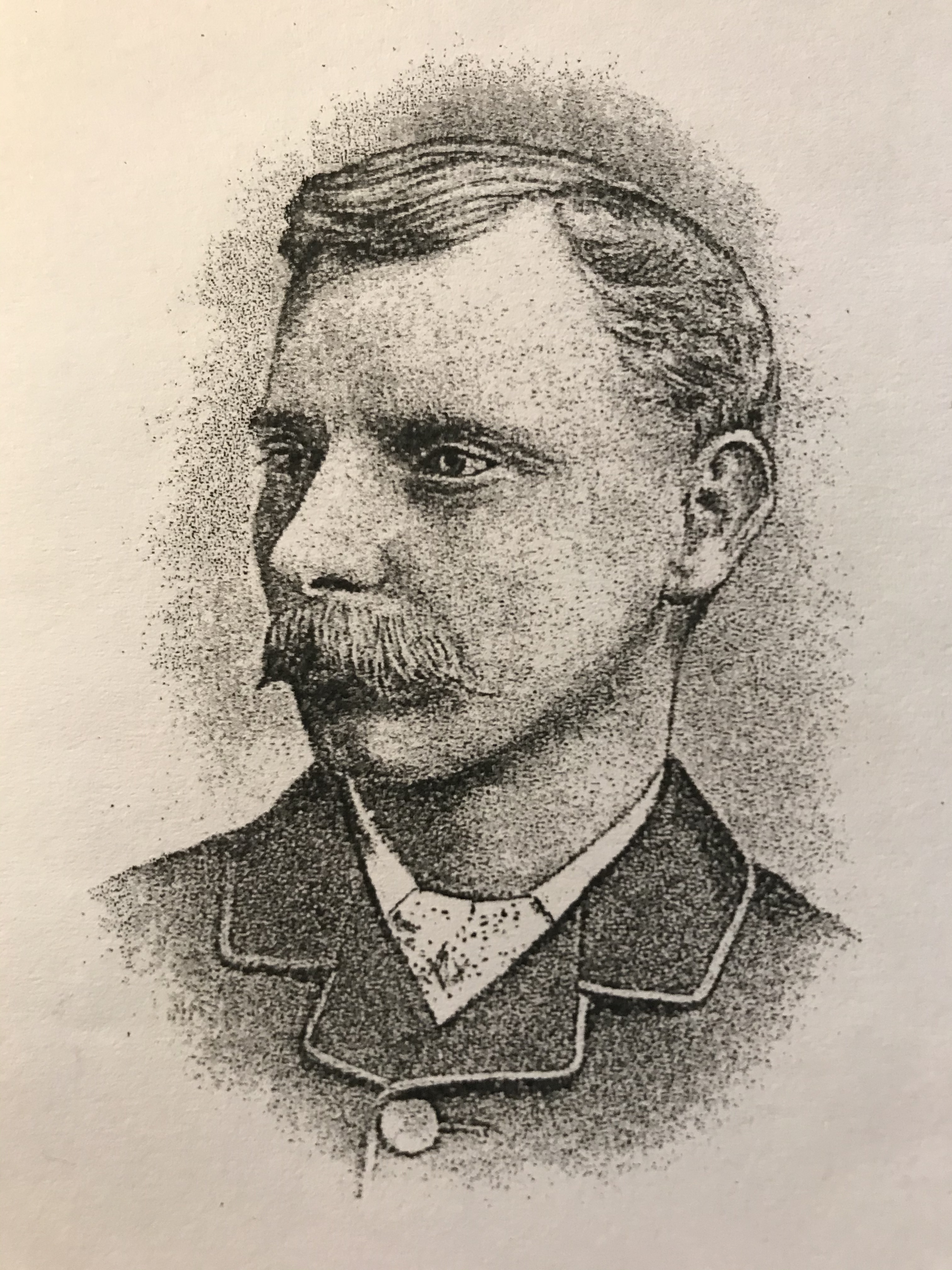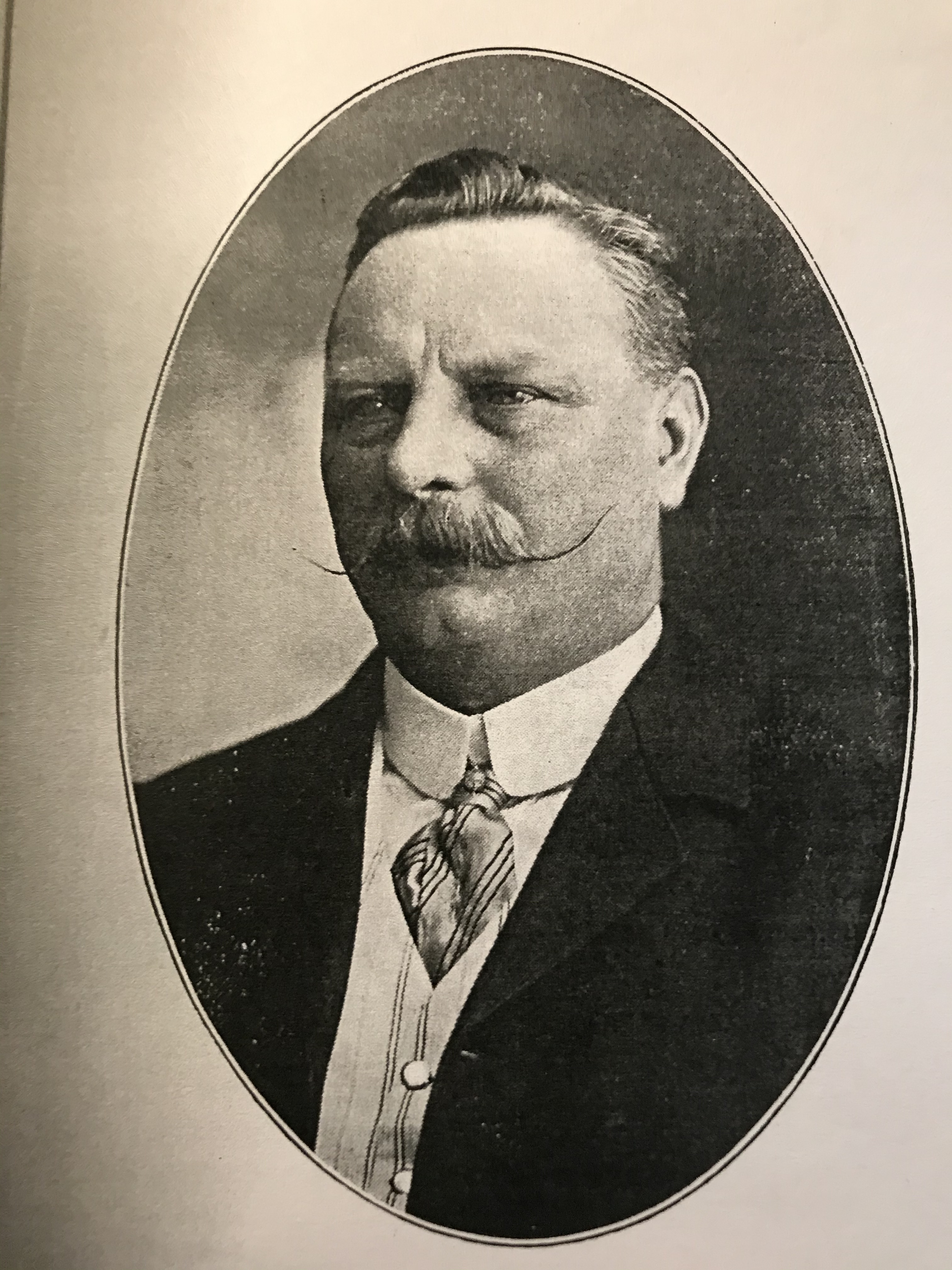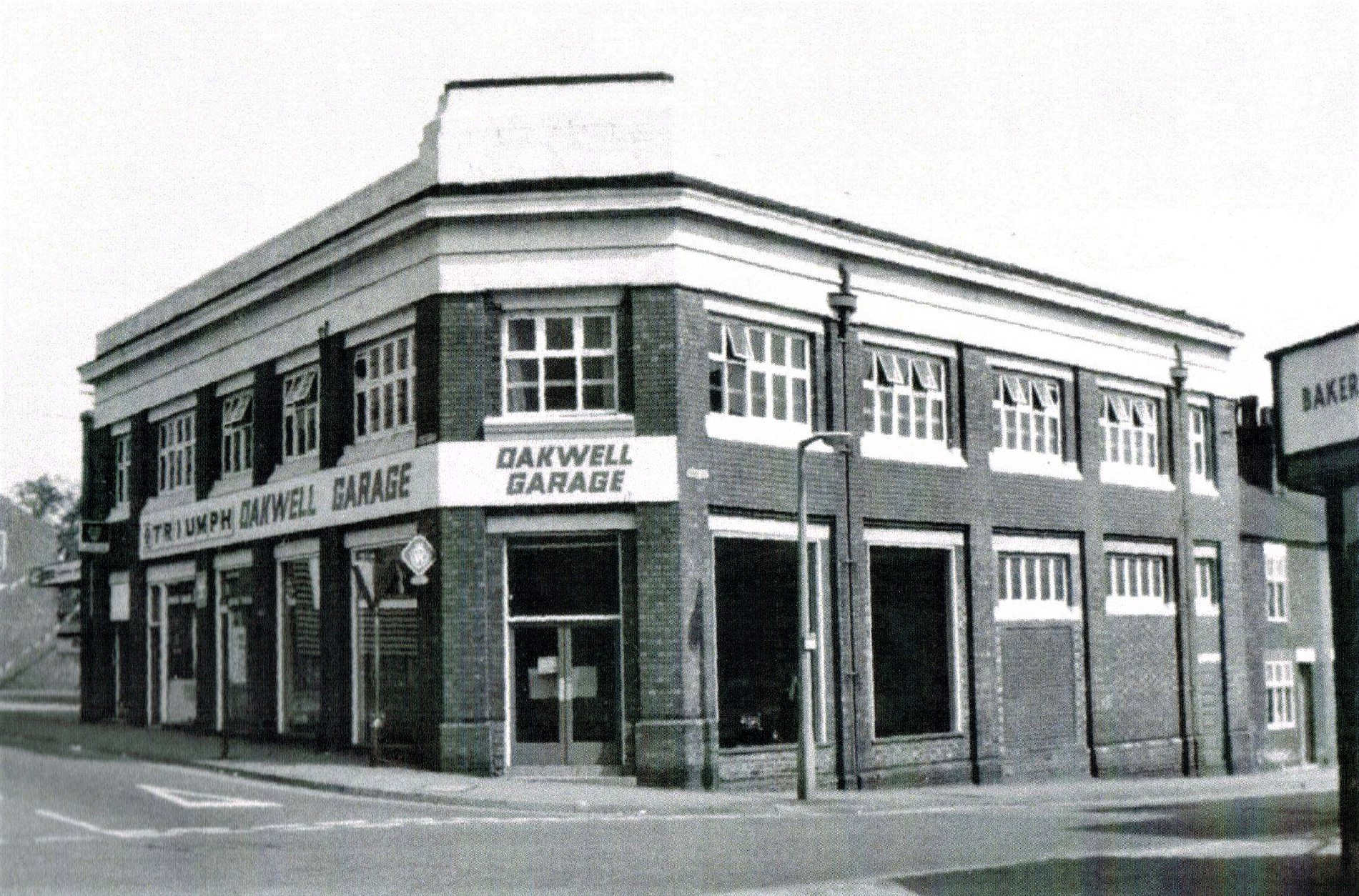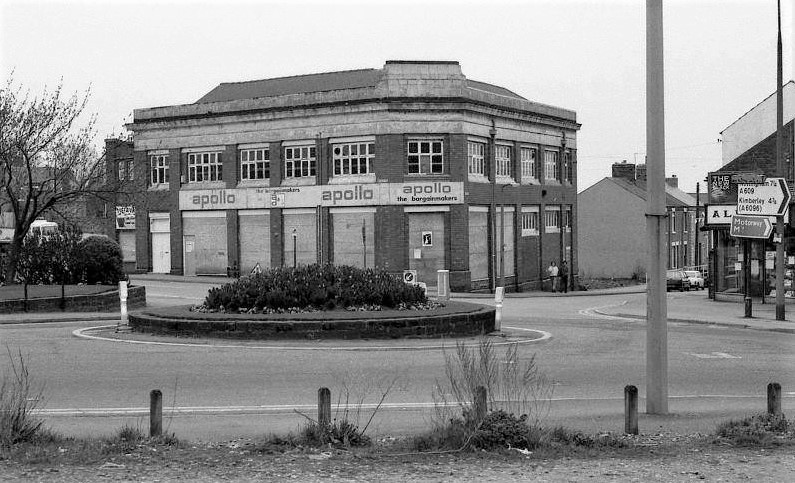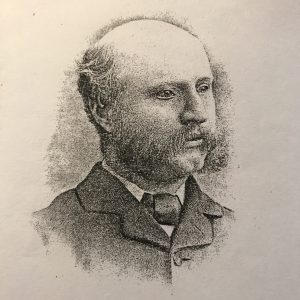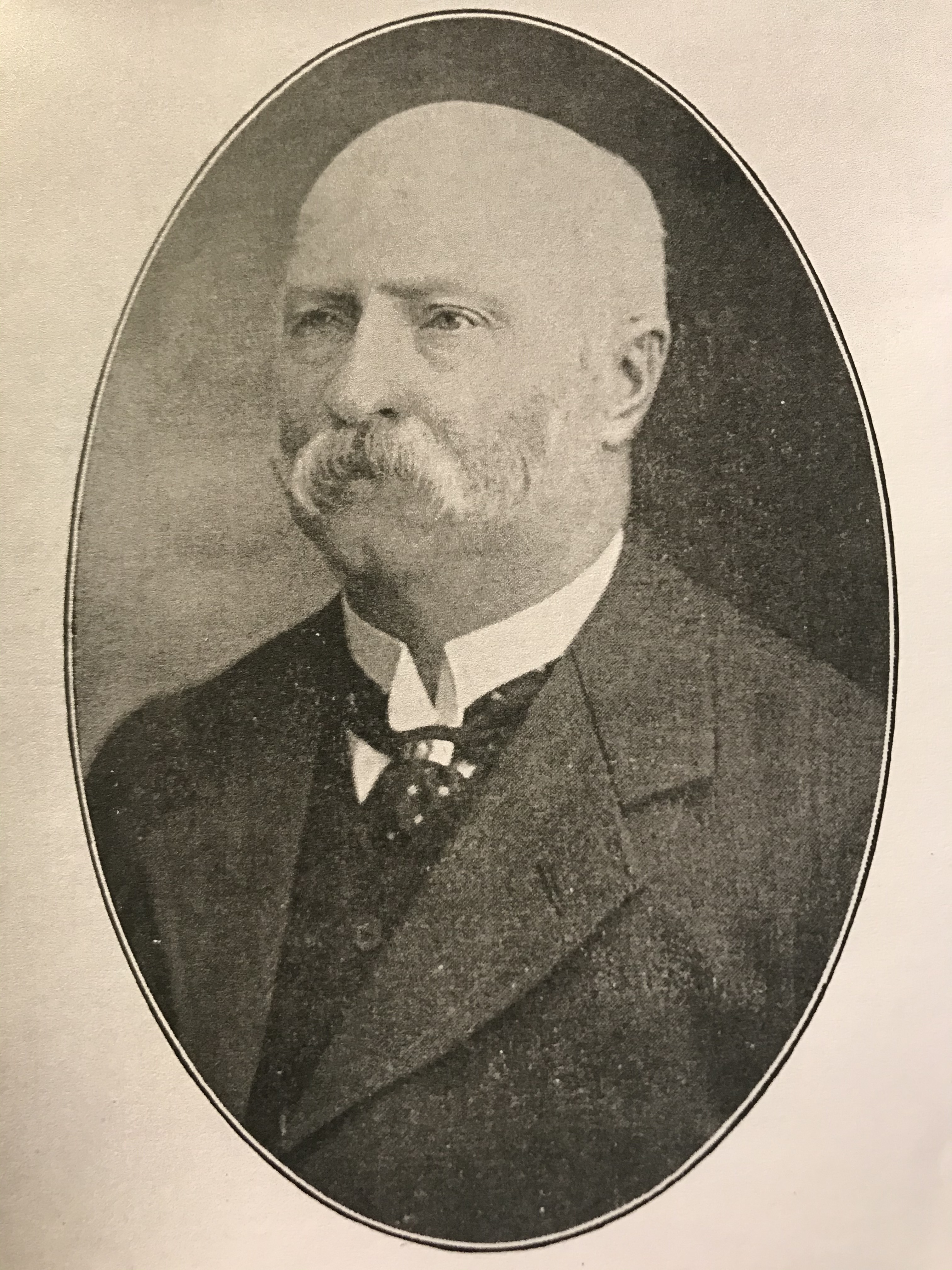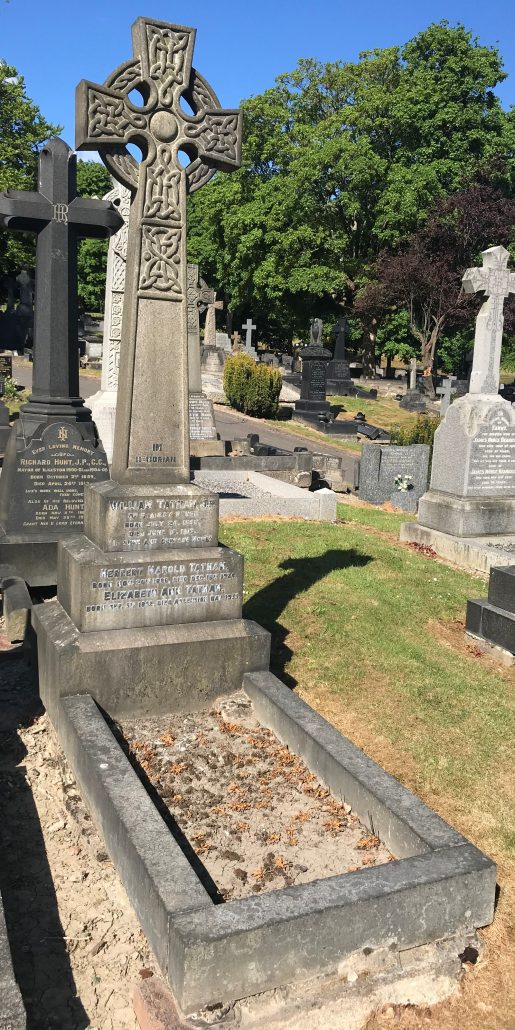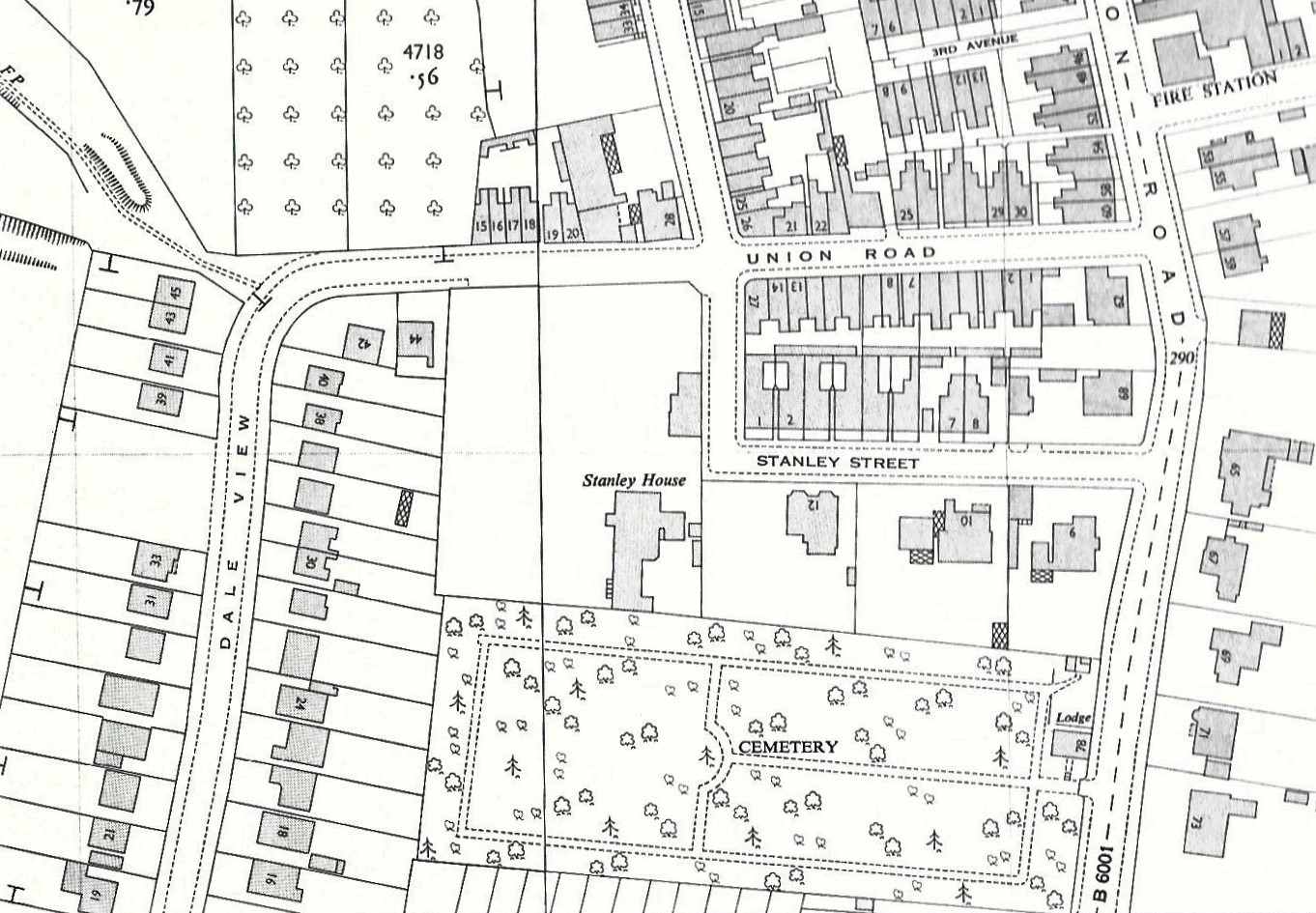Continuing our walk, further down Nottingham Road we meet the Tatham family … head of which is needlemaker Benjamin Tatham (c1800-1879), who married Sarah Hardy (c1800-1845) on August 26th 1822. The couple had at least ten children.
Sarah died on June 14th 1845, aged 45, a week after giving birth to the last children, twins Joseph (the elder by thirty minutes) and Isaac, who both died shortly after their mother. Benjamin was therefore left with a family of seven children – the eldest Edmund had married and left home – with ages ranging from 19 to five years.
—————————————————————————————————————————————————-
The Tathams: factory life
In January 1963 the Ilkeston Advertiser announced that the 139-year-old needle-making business of Walter Tatham & Co., believed to be one of the oldest established firms in Ilkeston, was to close down at the end of that month. It had been founded in 1824 (presumably by Benjamin) and for almost 108 years had been run by the Tatham family until, in 1932, it was taken over by the Marriott family. In his History of Ilkeston (1880) Edwin Trueman supports this by describing the firm as founded by Benjamin Tatham as ‘the first needle manufactory at Ilkeston’. (Trueman).
Other records reveal the same history. For example, from the time of the baptism of his first child at St. Mary’s Church in 1824, Benjamin is described as a ‘needlemaker’ and appears as such in Pigot & Co’s Directory of 1835, seemingly the first trade directory which lists either needle-makers or Benjamin Tatham. On the 1841 census — and all subsequent censuses in which he appears, Benjamin is a ‘needlemaker’. (On the 1871 census (the first one to show most Ilkeston houses with a number) he was living at 73 Nottingham Road.)
The Advertiser article also notes that a lace-making side of the firm had operated since 1859, though Sheila Mason writes that this had started by 1841 and probably as early as 1824.
In July 1862 B(enjamin) Tatham left the partnership of B(enjamin), E(dmund) and A(mos) Tatham, needlemakers.
And in 1865 Samuel P. Hodgson left the partnership of E(dmund) and A(mos) Tatham, manufacturers of lace, Nottingham and Ilkeston. (London Gazette September 1865)
In the late 1860’s the firm was split between the two eldest sons — Edmund and Amos.
Edmund Tatham, eldest son of Benjamin Tatham.
We will first concentrate upon Edmund (1824-1887) and his oldest son, Walter (1851-1926).
With his father, Edmund remained in Nottingham Road, at the Kensington site, as a needlemaker. By 1869 he had also acquired a lace warehouse in Nottingham, and added a factory extension to the Ilkeston works in 1872. Later, in the 1870’s, he moved to Addison Street in that city with his wife and most of his nine children.
In February 1872 Edmund’s oldest son, Walter, celebrated his 21st birthday and to commemorate the occasion a party was organised at the Kensington Works for the family and about 100 employees of ‘Edmund Tatham, lace and needle manufacturer’.
The Pioneer reported at the time that “we are glad to hear that the lace and needle business at these Works is in a most flourishing condition, and affords employment to so many inhabitants in the vicinity”.
About 1877/78 the same Walter Tatham bought the needle-making/machine-making side of the business from his father for £4000.
And in April 1878 the Nottinghamshire Guardian announced that the firm, sited at Kensington Works, Ilkeston, and 13 Castle-gate, Nottingham, was “despatching to the machinery department of the (Paris) Exhibition a beautiful case containing a complete collection of hosiery and warp needles, guides, hooks, points, &c., manufactured by them. The case is ornamented with designs of gilding on a black ground, and above it the name of the firm, with a view of the works at Ilkeston, is beautifully illuminated. The needles and other implements, highly finished, are arranged upon a bed of black velvet, and form a very striking design”.
At the same time (1877/1878) Edmund’s other sons, Edmund junior and Allen, together with Joseph Newsome Milne, had formed Tatham Brothers of Ilkeston and Nottingham, lace manufacturers of 14 High Pavement, Nottingham and at Kensington Works, Ilkeston. Meanwhile Edmund Tatham senior carried on business as a lace manufacturer in Nottingham.
One Saturday night in March 1881 a window pane on the ground floor of the Kensington Works was broken, allowing a hand to reach into the office, open a desk drawer which was close by, and remove from it a bag containing £5 17s 9d. This money was the sick club fund, employees paying 3d per week into it. As the money had not been placed there before, an inside job was suspected.
In 1881 Walter formed a partnership with Mansfield-born needlemaker Phillip Ellis to become Tatham, Ellis & Co (a name which it kept until 1891 states Sheila Mason)
In July 1884 the Ilkeston Pioneer had great confidence in the firm of Messrs. Tatham, Ellis, and Co. which was about to exhibit at the Textile Exhibition in the Agricultural Hall, London in the following month.
The newspaper had seen the firm’s exhibit .. a raised panel, 6 feet by 4 feet, containing thousands of needles, points, guides, hooks, sinkers, wheels, springs, etc. etc., artistically arranged on black velvet … and the paper was greatly impressed. It was confident that the firm would not let Ilkeston down.
And a year later …. “As manufacturers of machine needles, &c., (the Tatham) firm has gained a wide reputation. At the Antwerp Exhibition, in 1885, they were awarded the Gold Medal for superior excellence: and in the following year secured the Silver Medal – which was the highest award – at the Liverpool Exhibition”. (Trueman 1)
Shortly after the death of Edmund senior in 1887 ‘Tatham Brothers’ (that is, Edmund junior, his brother Allen Tatham, and Joseph Newsome Milne) amalgamated his business with their own and became Tatham & Co.
November 1888 — Success of an Ilkeston Firm at the Barcelona Exhibition.
Messrs Tatham and Ellis of Kensington Works, Ilkeston, have scored another success at the Barcelona Exhibition, receiving the highest award for a magnificent case of needles and delicate machine requisites, sent by them to that exhibition. (Nottingham Journal Nov 28th)
In May 1889 Edmund junior retired from this firm and made over his interests to his two former partners — trading as Tatham & Co., lace manufacturers of High Pavement, Nottingham, and Kensington Works, Ilkeston.
However, Edmund junior did not abandon the lace industry, but traded by himself under the name of “A.F. Soar & Co.” … a name chosen so as to avoid any confusuion with the firm he had just left. However, this was not a happy period for Edmund who soon thereafter, and consistently, ran into debt. The lace trade was depressed, he faced stiff competition, and legal proceedings against him contributed to his unwanted expenses. By the beginning of 1891 Edmund had liabilities of just over £1000, and assets of about £160 to his credit — and he was a sloppy book-keeper to boot !! Hence, all these figures were estimates !! He had given up his own firm in September of 1890 and had returned to work, as an employee, for his brother Allen.
(Allen Tatham and hispartner were declared bankrupt in November 1893 … see next page)
Copy of a Trade Card c 1891 (courtesy of the Ilkeston Reference Library).
————————————————————————————————————————————————-
Amos Tatham, second son of Benjamin Tatham
We now turn our attention to Amos, younger than Edmund by two years. He worked in the family business until the firm split in the late 1860’s.
The lace manufacturing partnership with his elder brother Edmund was dissolved in 1869 and in that year Amos established separate needlemaking premises in Belper Street, as Adeline explains. Having strong links with the lace trade and probably clear recollections and/of knowledge of its growth in Ilkeston and Nottingham, she writes that “Amos bought a piece of land in Belper Street, (on the east side), on which he built a small factory, and a house. They (later) went into the lace trade, and ultimately increased their building (on the west side)”.
Belper Street in the 1960s with the large Tatham Works on both sides (Jim Beardsley’s Collection)
By 1871 Amos had a house and factory on the east side of that street and the census of that year records him as living at 6 Belper Street as a needlemaker employing 29 men, 13 boys and four girls. In January of that year, he and his eldest son Herbert, ‘of Belper Street Works‘, applied for a patent for ‘improved means of taking up the threads in warp machines, and in the construction of points for such purpose’.
In the later 1870’s Amos expanded his ‘hosiery, lace and needle manufacturing works’ on the west side of Belper Street. And, as Adeline points out, “when they wanted to extend the factory the house was pulled down and another house (The Elms) built in Stanley Street”. ,
However, before this was built, Amos died in the Belper Street home on May 10th, 1878, aged 51.
Amos’s sons Herbert and William continued the firm’s growth until the former died in London in 1882, following surgical treatment in his throat, leaving brother William to continue the Belper Street expansion.
In 1884 warehouses and offices were built on the west side of Belper Street while a four-storey factory was erected on the site of the former house, by which time the family residence had been moved to Stanley Street.
During the building work for these new premises excavations were made for a large deep cellar, leaving the gable end of the old workshops unprotected, unsupported and only half a brick thick.
Not a clever move!
About nine o’clock one evening a large part of the wall collapsed into the cellar, damaging some machinery and valuable cardboard patterns of lace, and causing some consternation among the local populace.
————————————————————————————————————————————————-
The Tathams: family life
We start by examing the children of Benjamin and Sarah.
1 ….. Their eldest child was Edmund Tatham senior (1824-1887) sometimes referred to as Edwin (These names often appear interchangeable)
Somewhat mysteriously Adeline remembers that … “after Mr. (John) Cope retired or died came Edwin (Edmund) Tatham”. (Does she mean that when John Cope the framework knitter died in January 1859, the Tathams acquired his premises in Kensington ?)
“Later, Edmund and (his brother) Amos Tatham acquired the business, Edmund living in the old house against the factory with his family, Agnes, Walter and Ted”
Edmund married his first wife on January 23rd 1844. She was Elizabeth Wheatley Burgin-Richardson, eldest surviving child of South Street blacksmith Robert and Mary (nee Wheatley).
The children of Edmund senior and Elizabeth
Adeline mentions three of the children though there were at least six others…..
— The first child, unnamed, was born three weeks after the marriage, on February 13th, 1844, and lived only one hour.
— Born in 1846, Mary married on New Year’s Day 1868 to Frederick William Good, a lace manufacturer of Nottingham and continued to reside in that city.
— And so did Agnes (born on April 12th, 1848) after her marriage in 1868 to Nottingham clerk John Saywell.
— Walter (born February 24th 1851) does not appear to have left Ilkeston, even after his marriage in 1876 to Alice Amelia Roberts, the daughter of Nottingham lace manufacturer Henry and Caroline Amelia (nee Webster). Below we see a younger and older Walter ….
Walter died at Hillside, Nottingham Road, on November 12th, 1926, aged 75.
— The 1871 census describes Robert as an ’idiot’. He died in Nottingham in 1876, aged 23.
— Edmund junior was the next child, whom Adeline refers to as “Ted Tatham, and he married his first wife, Lavinia Flint, daughter of a farmer, of Gallows Inn. His second wife was Lizzie Goodacre, also a farmer’s daughter”.
We shall meet son Edmund Tatham junior alias ‘Ted’ shortly, at the bottom of Nottingham Road. So for the time being we leave him here.
— The next son was Allen (born on March 26th 1855). On June 17th 1891, now a lace manufacturer, he married Eleanor Redhead, daughter of William and Ann (nee Stokes) and continued to live in Nottingham. We shall meet Allen again shortly.
— Elizabeth Ann died on December 29th 1859 after six weeks of life.
— Elizabeth Jane lived in Nottingham with her parents, and then with her step-mother. V. Cole writes … “Lizzie Jane Tatham was my grandmother. My mother was born in 1894 and lived to be 109. It seems that the family did not know of her existence. I do not think I ever met my grandmother though my mother did know her in spite of having been brought up by foster parents”.
All very mysterious !!
————————————————————————————————————–
Edmund senior’s first wife, Elizabeth, died at the Addison Street home in Nottingham – number 19 Addison Villas — on November 2nd, 1876, aged 50. And two years later he married again.
On the 1881 Edmund junior is listed at his Addison Street home with his ‘wife’ Mary, aged 58, a native of Hallam, Nottinghamshire. So who was Mary, and when and where had she married Edmund ?
This puzzled me until Billy Boy came to the rescue (see Comments). He helpfully writes ….
SOLVED …… The answer is Mary Smith (nee Green) born abt.1823 HALAM (Nr. Southwell, Notts.) died 1891 Nottingham.
I found this in a roundabout way from her Will / Probate Record ………….
Name: Mary Tatham Probate Date: 5 Feb 1892 Death Date: 16 Sep 1891 Death Place: Nottinghamshire, England Registry: Nottinghamshire. 19 Addison St, Nottingham, widow
Probate to George Samuel Green, maltster Effects £2883 3s 1d Resworn March 1893 £3043 3s 1d
Could the name Green give us a clue?
Children to Samuel b.1784 [Oxton] (Orston) & Sarah Green b.1779 [Halam] of Halam, Notts…..
Elizabeth 1814 George 1818 Mary 1822 Sarah 1825
George was an Innkeeper & Maltster in Nottingham City.
1894-1895 Wright’s Directory – Publicans George Green, Duke of Newcastle Arms, 68 North Sherwood St. (Corner of Bluecoat St. & N.Sherwood St.) and Sir Isaac Newton, 2 Howard St. (Rear of present Victoria Centre)
George had a son George Samuel born 1855 Nottingham.
1910-1911 Wright’s Directory – Publicans George Samuel Green, Duke of Newcastle Arms, 68 North Sherwood St.
This would be the person (Mary’s nephew), to whom probate was granted as he was often referred to as Maltster.
So we have a Mary Green born Halam Notts. 1822/3.
Found this marriage: Name: Mary Green Spouse: Charles Smith m. Sep Q 1845 Nottm. (Sept 14th 1845 at Nottingham St Mary’s — admin)
Then back to Public Houses again:
1861 Census: St Peter, Nottm. ‘Queen Elizabeth’ on Bottle Lane. (Lace Market) Charles Smith 47 (Licensed Victualler) Arnold, Mary Smith 38 Halam
1871 Census: ‘Queen Elizabeth’, Bottle Lane, St Peter, Nottingham Charles Smith 57 Arnold, Nottinghamshire – Licensed Victualler Mary Smith 48 Halam, Nottinghamshire
(Only servants were listed on all census from 1851, no children.)
Edmund, no doubt passed this Pub on his way home from the factory on High Pavement, Nottm.
The Will of Charles Smith late of the town of Nottingham, victualler, who died 26 Jan 1877 was proved at Nottingham by Mary Smith, widow. – Effects under £1500.
(Buried at Adbolton, aged 63 … Jan 31 1877 — admin)
Then this …registered at Knaresbro’ 9a 167 Yorkshire West Riding West Yorkshire, Marriages and Banns Marriage: 1878 Name: Edmund Tatham Father: Benjamin Tatham Spouse: Mary Smith Father: Samuel Green
No wonder we could not find it, why Yorkshire? Perhaps they felt guilty marrying so soon after spouses’ deaths.
Sorry to be so long winded but hope we have filled the gap.
And been on a “Pub Crawl”
Excellent work !!
Edmund senior died at 19 Addison Street on March 4th, 1887, aged 62.
And five months later the trustees* of his will put up for sale the Needlemaker’s Arms Inn in Kensington Street, then occupied by Edmund’s brother Herbert.
*The trustees were sons Edmund junior, Allen and Walter (who declined to act)
—————————————————————————————————————————
2 …. the second child of Benjamin and Sarah was Amos Tatham (1826-1878) who was born in Ilkeston, and married Eliza Bell, eldest daughter of blacksmith and publican William and Phoebe (nee Riley) at St. Mary’s Church on May 24th 1847.
After the birth of their first child, Herbert, on September 25th, 1848, the family went to live in Crich for a few years, where children William (1850) and Eliza (1852) were born
Adeline writes that …. “in 1854 Amos Tatham and his family came (back) to Ilkeston”….. in time for the birth of daughter Sarah (August 19th, 1855).
She then continues ….. “Amos and his family lived in a house at the top of Park Road. The houses have been pulled down and a garage built on the site”. Could this, below, be the garage premises referred to ? … with Park Road to their right and Market Street on the left.
Adeline continues to describe the movements of the Tathams ... “Amos next moved into a house on the west side of Nottingham Road. When Edmund Tatham left the town in the (early)-mid sixties, Amos and family moved into the old house against the factory, and again, when Edmund returned to Ilkeston in the early seventies, he moved into Belper Street”
—————————————————————————————————————————————————–
The children of Amos and Eliza….
1 …. “Herbert, the eldest, married Helen Sudbury, the youngest sister of the first Mayor of Ilkeston,” writes Adeline. We have already encountered Herbert (1848-1882) with the Sudburys of South Street when he had married Ellen Sudbury, youngest child of hosier and glover Francis and Ann (nee Mather) on September 28th, 1869.
From the commencement of the firm of Amos Tatham and Sons, hosiery, lace and needle manufacturers in the 1870’s he was one of its most active partners and as his father became frail and ill he took over the main control, expanding the business in Ilkeston, Nottingham and Melbourne.
At the beginning of December 1875 Herbert had employed Harriet Turner, aged 19 — daughter of agricultural labourer Henry and Mary of Balderton, near Newark — as a domestic servant to his household.
About ten days later Harriet had gone out during the Sunday afternoon of December 12th with her sweetheart, and returned to the Tatham residence about 4pm. Half an hour later Herbert rung several times for Harriet to serve tea without success — so he called for her and then went to look for her. Eventually a little before 6 o’clock she brought in tea — over an hour later than usual — complaining of a headache. She said that she would not be attending chapel that evening. After tea a young man came to visit her and left about 8pm, shortly before Harriet retired to bed.
About two months later Alonzo Spencer, stationary engine driver of 44 Park Road and also employed by Herbert as a groom, was emptying rubbish from his master’s piggery. There he spotted an old biscuit tin, inside of which was a bundle containing the body of a female child, wrapped in some old cloths and pieces of newspaper.
In the evening the police and Dr. Robert Wood were called and the body was examined, enquiries were made, and these led to Harriet being arrested the following morning.
By that time she had moved out of the Tatham’s house and was employed by Bath Street tailor and outfitter Edwin Sutton, living on his premises.
She was charged with “unlawfully and of her malice aforethought, killing and murdering a female child, whereof she had just been delivered”.
At the subsequent Coroner’s Inquiry in February 1876 evidence was heard from several witnesses including Alonzo’s wife Caroline (nee Brakes) who stated that she had discussed Harriet’s pregnancy with her.
Superintendent of Police (Smalley Division) John Hancock testified that he had interviewed Harriet in the lock-up at the Town Hall where she had confessed to cutting her daughter’s throat with a carving knife just after her birth and after the baby had cried out.
Surgeons Robert Wood and Henry George Brigham were both of the opinion that the child was alive after birth, and that death was due either to a loss of blood from an untied umbilical cord or a wound to the throat.
The Coroner was now confident that the case presented few difficulties — he was sure that the admissions of the prisoner, corroborated by witness evidence, would lead the jury to arrive at a just decision without any further remarks on his part.
After 15 minutes’ deliberation the Coroner’s jury unanimously returned a verdict of wilful murder against Harriet.
Harriet’s trial was at Derby Crown Court in March 1876.
Her defence case centred on the suspect nature of Superintendent Hancock’s interrogation and the conflicting medical evidence over whether the child was born alive and had subsequently had a ‘separate existence’ from her mother.
Had Harriet murdered her child while it was alive or had she merely concealed the birth?
Swayed by the arguments of the defence, the jury returned a verdict of guilty but only of concealment of a birth, an offence which could often vary in degree and thus in importance. The judge pointed out that sometimes the case might warrant a very mild sentence, as it is one rather for pity than for punishment. In this case however he considered it to be as near to murder as it could possibly be. Consequently he sentenced Harriet to 18 months imprisonment with hard labour.
At the same court, at the same time, for concealment of a birth, Elizabeth Bennett of Buxton received three months hard labour while ‘deaf and dumb’ charwoman Mary Jane Bunting of Ashover was found not guilty of a similar offence.
Herbert and Ellen had three surviving children …
Ann Eliza, born on December 17th, 1870. On January 6th, 1892, she married Councillor John Joseph Tobin, originally of Cahir, Ireland, but then physician and surgeon of Ilkeston. As John Joseph was a Roman Catholic and Annie a Protestant, there were two marriage ceremonies. The first was at the Free Methodist Chapel in South Street, where the legal marriage was completed, a second religious rite being held at the Roman Catholic Chapel.
Amos Frank Sudbury Tatham, born in South Street on January 20th, 1872. On April 26th, 1897 he married his cousin Edith Alice Tatham, eldest child of William and Elizabeth Ann (nee Carrier) at the South Street chapel. By 1899 Frank was working in the family firm of “Amos Tatham & Son, lace and needle manufacturers of Belper Street” and found himself representing that firm in a case at Ilkeston County Court on April 24th, 1900. The family were suing blouse manufacturer James Lander of London for goods they had supplied to him, valued at just over £21, and for which he was now refusing to pay. These were ‘fashion goods’ (that is, only of full value in the current season), and were lace items with ribbons attached. Frank had negotiated an order for four gross of each of five different colour ribbons. All were made and sent off to London, beginning in January 1899, and then in instalments over succeeding months. No significant complaints were made about the quality of the goods but in June the blouse manufacturer refused any further supplies. Eventually just over half of the original order was refused by James Lander, on the grounds that the quality did not reach that of the samples he had been shown. He was not convincing enough however, and the Tathams won the case — for all of their claim plus costs.
Herbert Everard Tatham, born on May 11th, 1878. He married Clara Worrall in 1900, at St Augustine Church in New Basford.
For some years Herbert suffered from a serious throat and chest complaint, which eventually led him to seek the advice of Sir James Paget and the relief of an operation performed by Dr. Lennox Browne, assisted by Dr. Llewellyn Thomas, (both founders of the Central London Throat, Nose and Ear Hospital in 1877) in London in November 1882.
Initially this procedure seemed to be a success, but then Herbert’s health once more deteriorated and within three weeks he was dead…. at 44 Devonshire Street, Portland Place, London.
His body was brought back to his mother’s home in Belper Street before being buried in Ilkeston General Cemetery.
His coffin was carried to his grave by employees of his company. At that time Herbert was senior partner in the firm of Messrs. Amos Tatham & Sons, Belper Street Works, and Chairman of the School Board.
The local press felt it an appropriate opportunity to assess his life and work.
Thus, he was judged as a shrewd, pragmatic and successful businessman, a caring and sympathetic employer, and a genial, warm and witty friend.
He had displayed energetic zeal in affairs of the Free Methodist Church and at various times acted as circuit steward, superintendent of the Sunday School, and President of the Young Men’s Class.
In politics he was a staunch Liberal, one of a group which had established a Liberal Association in the town. He would fight his ‘political corner’ vigorously but never hold a grudge against those who opposed his views.
He was also a one-time member of the Local Board and had been elected to the first two of the School Boards in 1878 and 1881, on the second one serving as Chairman. He was deeply concerned in all local educational matters but took particular interest in the development of the schools scheme at Kensington.
Just over ten years after his death, in 1893, Herbert’s widow Ellen married widower and Cossall Colliery manager William Holding, and then left Ilkeston to live with him at Cossall. Shortly after this marriage — on April 24th 1893 — accompanied by her 15-year-old son Herbert Everard Tatham, Ellen was driving her pony carriage to visit friends in Ilkeston. Arriving at the Midland Railway level crossing at Ilkeston Junction, they were held up for some time by the closed gate there, behind a very cumbersome coal wagon. When the gate opened they travelled very slowly over the crossing behind this wagon. They had not cleared the up-line before an express train for London came along, seemingly unseen by anyone — consequently no warning or alarm was sounded to announce imminent danger !! Just a second or two before the express was upon them, Herbert Everard saw the danger and called out to his mother to jump, and immediately both of them jumped, one from one side and one from the other. Hardly had Ellen left the carriage than the locomotive ploughed into her vehicle, cutting it in half and striking her hip and back, either from the buffer of the engine or from a portion of the wrecked cart. Strangely the pony escaped uninjured, as did the lad but his mother was badly bruised, completely distraught, and totally shocked. “Her escape from certain death was very narrow”. Dr. Tobin was quickly on the scene and Ellen was taken to her Cossall home. Her husband William was travelling in Wales at the time of the accident, but, on hearing of his wife’s distress, quickly returned home. It transpired that the rail employee in charge of the level crossing gates was new to the task, and this was the first time he had been in sole control of their operation.
At the next meeting of Ilkeston Town Council, the Mayor William Merry suggested that the directors of the Midland Railway Company be approached about the dangerous state of this level crossing; as well as Ellen’s ‘near miss’ several deaths had occurred there. This was unanimously agreed. It should be noted that Ellen was the younger sister of the Mayor’s wife !!
2 … William (1850-1913) married Elizabeth Ann Carrier, eldest child of Bath Street grocer and draper Joseph and Jane (nee Attenborough) on September 7th, 1875.
Trueman 1 points out that “William received his commercial education in Paris, where he studied the French language from 1867 to 1870.
“The firm of Messrs. Amos Tatham & Son, of which (William) is the only surviving partner, obtained the highest medals given for superiority of machine needles at the last International Exhibition held at Paris, and at the Troyes Exhibition; and were also awarded a silver medal by L’Académie Nationale of France, of which (William) is a member”.
Until January 1893 William carried on the business as a lace and needle manufacturer under the syle of “Amos Tatham and Son”.
A troublesome time for William 1894
Born on October 26th 1862 at Kensington, William Smith was the illegitimate son of Ellen Smith, who in turn was the illegitimate daughter of Sarah Smith (nee Buss). Sarah Buss had been married to Jonas Crich in 1823, and when her husband died in 1826, Sarah remarried to John Smith in 1829. The couple had parted shortly after the birth of daughter Ann Smith in 1830. Sarah then went on to have at least two more, illegitimate daughters; one of them was Ellen, born in 1839 and whose father was needlemaker William Fox. Now back to William Smith.
William’s mother Ellen married shoemaker Samuel Fretwell on May 31st, 1863, less than a year after the birth of her son — perhaps Samuel was the father ? After the marriage of his mother, William adopted the name of William Smith Fretwell … and it was under that name that he appeared at Ilkeston Petty Sessions on May 3rd, 1894 on a charge of embezzlement.
Since the age of 16 William had worked for ‘Amos Tatham and Son‘ so that by 1894 he was cashier and confidential clerk for William Tatham and enjoyed his employer’s absolute confidence. He would receive moneys and enter them into the company cash-book, though in court it emerged that, for several years the clerk had been appropriating some of this income for himself. Over the years this had amounted to at least two hundred pounds. However, in court, specific occasions of fraud were outlined.
For example, Alexander Cordon was a machine builder who also worked for ‘Amos Tatham and Son‘, and often sold waste for the firm, handing over any money he received to cashier William. Unfortunately for the latter, Alexander kept a careful note of all money he paid to William; in 1890 income received and handed over by Alexander had not been accounted for in the ledger. Another book-keeper, Henry Smith of Gregory Street, had also examined the books carefully and came to the same conclusion, that on numerous occasions William Smith Fretwell had not accounted for money he had received. William Tatham confronted his cashier about this and other discrepancies but on several occasions the latter had expressed his innocence. Further investigation convinced Mr. Tatham that his employee was guilty of stealing from the firm; he was dismissed and, a short time later when more missing income was revealed, he was arrested and charged.
William Smith Fretwell immediately pleaded guilty to all charges such that, with the agreement of the prosecution, the magistrates at the Petty Sessions could deal with the case and with William’s punishment, without sending him to the Assizes for trial. He was then sentenced to a total of nine months in prison for a combination of the offences.
At that time William was living in South Street, with his wife Maria (nee Cooper) whom he had married in 1884. They had five children, the last one — Mary Elizabeth — less than a year old.
Nor was this a pleasant week for the other William — William Tatham. Just a few days prior to this case coming to the Petty Sessions, his home in Stanley Street (Stanley House) had been burglarised and £150 in gold and notes stolen from his desk.
.
.
.
Both William and Elizabeth Ann died at Stanley House, Stanley Street.
The Saxon Cross headstone for William, his wife and son, in Park Cemetery.
In memoriam
William Tatham J.P. of Stanley House
born July 24th 1850, died June 16th 1913
“In sure and certain hope”
Herbert Harold Tatham, born Nov 20th 1886, died Dec 16th 1924
Elizabeth Ann Tatham, born Sep 5th 1882**, died Ascension Day 1933
** An interested reader has pointed out the error that Elizabeth Ann (nee Carrier), daughter of Joseph and Jane (nee Attenborough) was born Sep. 5th 1852 and not as originally shown. Many thanks John … anyone else who wishes to point out an error or add to the site, please feel free to do so … I welcome them.
The site of Stanley House in 1959, now replaced by a new housing estate
Stanton Road is at the right hand (east) side of the map and the Cemetery at the bottom is Ilkeston’s General Cemetery, now closed to burials.
3 … “Eliza (1852-1876) …. Six weeks before the marriage of her brother William, Eliza married William Skevington Green, eldest child of South Street shoemaker and grocer William and Eliza (nee Skevington) — on July 27th 1875. Adeline refers to him as a schoolteacher though, like his father he appears to have been a shoemaker.
Eight months after her marriage Eliza died on March 24th 1876, in Belper Street, aged 24.
Her widower, Robert, was the half-brother of Samuel Cresswell who had been found dead, in rather suspicious circumstances in Nottingham in 1896.
And William too was also found dead in rather unusal circumstances in the same city, in 1905. Recently trading as a drapery wholesale warehouseman in Edwalton, Nottingham but now living at Southwell, he had been declared a bankrupt, and on the morning of May 19th, 1905 had had to attend a public examination by the Official Receiver, at the Nottingham Bankruptcy Court. At the lunchtime recess he went to the nearby Great Central Railway Station for a bite to eat. He had been discovered by a railway porter, unconscious in a station lavatory, and quickly transported to the General Hospital. He died very shortly after, ‘from natural causes’, though how much the stress of his personal circumstances had contributed to his death was not a subject of the inquest jury’s speculation.
4 …. Sarah (1855-1938) married butcher and farmer Arthur William Sudbury, eldest son of William Sudbury, butcher and farmer, of Oakwell Farm
5 ….. Arthur Amos (1862-1893) or Amos Arthur as he was registered — died at the Elms in Stanley Street, unmarried, on April 13th 1893, aged 30.
—————————————————————————————————————————————————–
The other children of Benjamin and Sarah
Benjamin and Sarah Tatham had eight other children.
3 …. In Ball’s Yard we met eldest daughter Sarah Ann (1829-1905) who married lacemaker and later pork butcher Thomas Ball in 1859.
4 …. Her sister Maria (1831-1894) married Alexander Cordon on July 11th 1853. He was a framesmith and manager at Amos Tatham & Sons, and before the marriage, had been with Amos at Crich.
Maria and Alexander spent the latter part of their lives at Orchard House in Nottingham Road, and Maria died there on March 2nd, 1894, aged 62.
5 ….. Eliza (1833-1928) lived as a spinster, all her life spent in Nottingham Road, and died at number 283 on November 14th 1928, aged 95.
She was a long-time member of the Independent Chapel.
6 …. Herbert (1835-1899) married on March 24th 1856 to Martha Bamford, daughter of Ilkeston Common blacksmith Thomas and Sally (nee Wheatley).
Both died at their home at 37 Graham Street, on October 20th 1899 and on March 18th 1902 respectively.
7 … Mary (1838-1916?) was a Tatham who managed to ‘escape’ from Nottingham Road when she married engine fitter Theodore Richardson in November 1857 and moved to Derby. Theodore was a younger brother of Joseph, a joiner, whom we have met in Regent Street.
8 … Benjamin junior (1840-1918) was born, lived and died in Nottingham Road – the latter event at number 283 on December 17th, 1918, when he was aged 78.
One of this Benjamin’s sons was also named Benjamin, born in March 1875….
ACCIDENT AT ILKESTON. – Yesterday morning a young man named Benjamin Tatham, son of Benjamin Tatham, was at work at the lace factory of Mr. Edmund Tatham, Kensington, Ilkeston, when by some means he was drawn up to the shafting of the machinery, and whirled round until his clothes gave way, and he fell to the floor.
Strange to say, with the exception of a broken arm and a good shaking, the lad received no further injury.
(Nottingham Evening Post – Thursday 20th. Dec. 1888).
(My thanks to ‘Billy’ for this contribution … see Comments)
9 and 10 ….. Born on June 7th, 1845 the twins Joseph (the elder by 30 minutes) and Isaac survived only a few weeks.
—————————————————————————————————————————————
Just over five years after the death of his first wife, Benjamin Tatham senior married his second wife on July 27th 1850.
She was born Ann Scattergood in 1807, the daughter of lacemaker Thomas and Mary (nee Gorse) and had married needlemaker Joseph Hardy in February 1837. Less than two months after the death of ‘much respected’ Joseph, aged 42 – in June 1850 — his widow married Benjamin and the pair lived together in Kensington for the next 20 years.
I wonder if Joseph Hardy, born about 1807, and Sarah Hardy (Benjamin’s first wife), born about 1800, were related ?
————————————————————————————————————————————
Let us revisit Allen Tatham, grandson of Benjamin and the youngest son of Edmund senior and Elizabeth, before we move on to the Ilkeston Mechanics’ Institute

